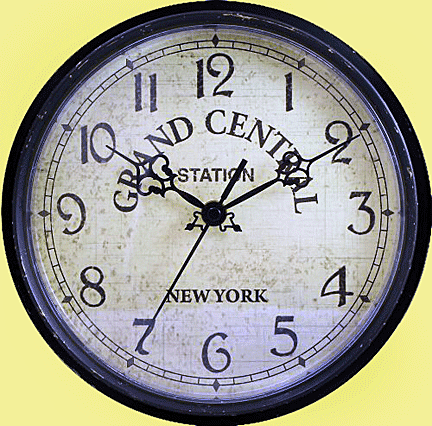 On
November 18, 1883, the way the world noted time changed forever.
Until that day, every town and city followed its own time. Life was
slower. Then something happened that changed the way people moved
around. And that something was the coming of the railroads. No
longer would it takes days or weeks to get from one place to
another. The railroads saw to that. And with the speeding up of
travel, something had to be done to get all the trains on time.
On
November 18, 1883, the way the world noted time changed forever.
Until that day, every town and city followed its own time. Life was
slower. Then something happened that changed the way people moved
around. And that something was the coming of the railroads. No
longer would it takes days or weeks to get from one place to
another. The railroads saw to that. And with the speeding up of
travel, something had to be done to get all the trains on time.
Before clocks, people kept time using different instruments to
observe the Sun’s meridian passing at noon. For example, the time on
a sundial―which was typically different for every location and
dependent on longitude. The earliest time measuring devices we know
of are sundials and water clocks.
During the 17th century, clockmakers developed the pendulum clock.
However, these clocks weren’t sufficiently accurate to be used at
sea to determine longitude and for scientific time measurement in
the 18th century.
In 1764, they had invented the chronometer, used to measure time
accurately in spite of motion or varying conditions. These became
popular instruments among merchant mariners during the 19th century.
Clocks Based on the Sun
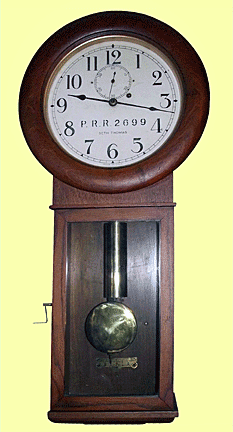 Even
after the chronometer many towns and cities set clocks based on
sunsets and sunrises. Though dawn and dusk occur at different times,
people barely noticed time differences between distant locations
before the 19th century because of long travel times and the lack of
long-distance communications.
Even
after the chronometer many towns and cities set clocks based on
sunsets and sunrises. Though dawn and dusk occur at different times,
people barely noticed time differences between distant locations
before the 19th century because of long travel times and the lack of
long-distance communications.
The use of local solar time became increasingly awkward as railways
and telecommunications improved. Time zones were, therefore, a
compromise, relaxing the complex geographic dependence while still
allowing local time to be approximate with mean solar time.
During the late 1800s. Each train station set its own clock making
it difficult to coordinate train schedules and confusing passengers.
Time calculation became a serious problem for people traveling by
train (sometimes hundreds of miles in a day),
Every city in the United States used a different time standard, so
there were more than 300 local sun-times to choose from. Railroad
managers tried to address the problem by establishing 100 railroad
time zones, but this was only a partial solution.
Because the United States had no time standard, there was lots of
confusion. Each town or city kept its own solar time, setting clocks
so noon was when the sun appeared directly overhead.
What that made sense for anyone who never left town, it became
complicated for travelers. Noon in Boston would be a few minutes
before noon in New York City. And Philadelphians experienced noon a
few minutes after New Yorkers did. And on and on, across the nation.
The expansion of the railroads in the years following the Civil War
only made the confusion over all the local time zones seem worse.
The Establishment of Time Zones
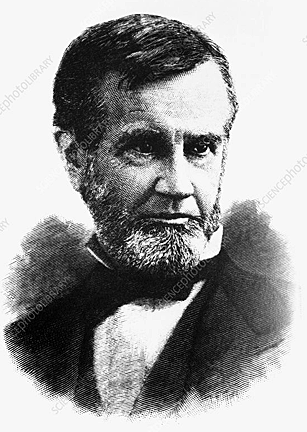 Charles
F. Dowd proposed a system of one-hour standard time zones for
American railroads about 1863, although he published nothing about
it at that time and didn’t consult railroad officials until 1869. In
1870 he proposed four ideal time zones having north–south borders.
The first centered on Washington, D.C., but by 1872 that changed to
the meridian 75° W of Greenwich. Each centered on geographic
borders, for example, sections of the Appalachian Mountains. The
American railroads never accepted his system.
Charles
F. Dowd proposed a system of one-hour standard time zones for
American railroads about 1863, although he published nothing about
it at that time and didn’t consult railroad officials until 1869. In
1870 he proposed four ideal time zones having north–south borders.
The first centered on Washington, D.C., but by 1872 that changed to
the meridian 75° W of Greenwich. Each centered on geographic
borders, for example, sections of the Appalachian Mountains. The
American railroads never accepted his system.
Instead, U.S. and Canadian railroads implemented a version proposed
by William F. Allen, the editor of the Traveler's Official Railway
Guide, in 1881. The borders of its four time zones―Intercolonial,
Eastern, Central, Mountain, and Pacific—ran through railroad
stations, usually in major cities. For example, the border between
its Eastern and Central time zones ran through Detroit, Buffalo,
Pittsburgh, Atlanta, and Charleston. On Sunday, November 18, 1883,
the railroads implemented Allen’s plan. This day was also called
"The Day of Two Noons," because station managers reset their station
clocks within each time zone as their location reached standard-time
noon.
On April 11, 1883, in St. Louis, Missouri, U.S. and Canadian
railroad officials, meeting at the General Time Convention in
Chicago, agreed to create five time zones in North
America—Provincial, Eastern, Central, Mountain, and Pacific. On
October 11, 1883, they met again and formally decided that the new
standard of time would take effect a little more than a month later,
on Sunday, November 18, 1883.
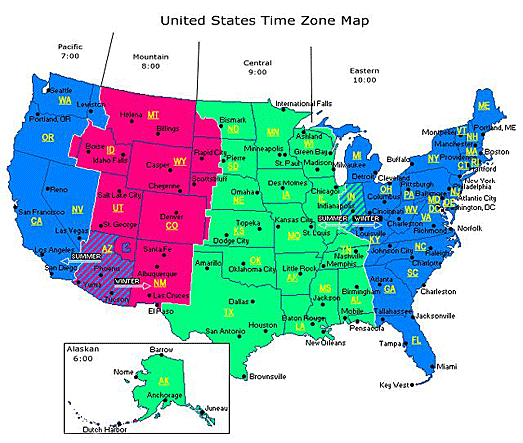
The shift amounted to only a few minutes for many people. In New
York City, for instance, the clocks would be turned back four
minutes. Going forward, noon in New York would occur at the same
moment as noon in Boston, Philadelphia, and other cities in the
East.
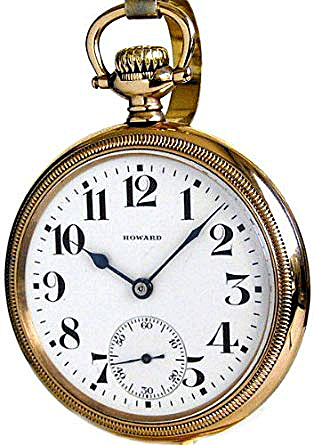 In
many towns and cities, jewelers used the event to drum up business
by offering to set watches to the new time standard. And though the
new time standard wasn’t sanctioned by the federal government, the
Naval Observatory in Washington offered to send, by telegraph, a new
time signal so people could synchronize their watches.
In
many towns and cities, jewelers used the event to drum up business
by offering to set watches to the new time standard. And though the
new time standard wasn’t sanctioned by the federal government, the
Naval Observatory in Washington offered to send, by telegraph, a new
time signal so people could synchronize their watches.
Standard time, in terms of time zones, wasn’t established in United
States law until the Act of March 19, 1918. The act also established
Daylight Saving Time in the nation. Although the U.S. Congress
repealed Daylight Saving Time in 1919, standard time in time zones
remained in law, with the Interstate Commerce Commission (ICC)
having the authority over time zone boundaries.
The successful adoption of standard time in the
United States in 1883 set an example of how time zones could spread
across the globe. The following year a time convention in Paris
began the work of designating time zones worldwide. Eventually, the
time zones around the globe we know today came into use.
